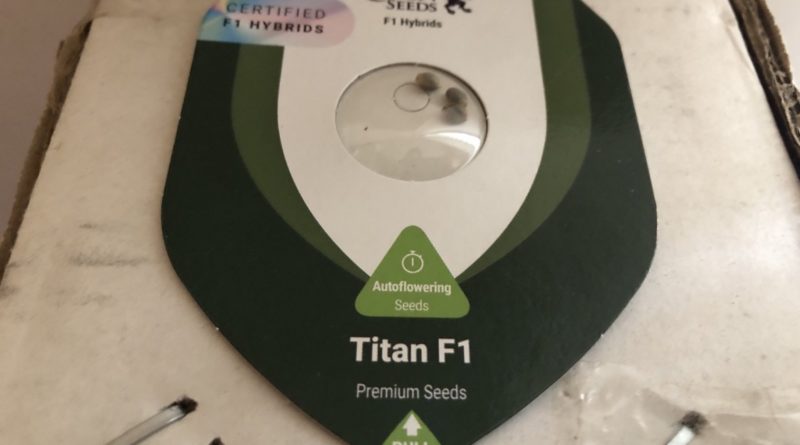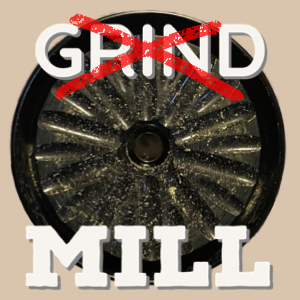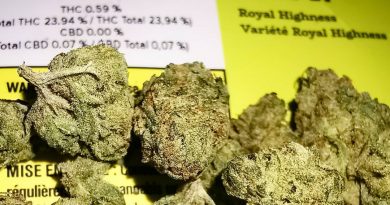Royal Queen Seeds’ Max Majot talks RQS’s new Autoflower F1 Hybrids
I had the chance to speak with Max Majot from Royal Queen Seeds (RQS) which gave me a lot of new insight into two disparate breeding projects across time and space. The first, happened decades ago in New Caledonia. The second, happened in the last decade or so in Europe. The well known seedbank is one of many which have emerged in the 21st century which highlights the transition of the European center of cannabis from The Netherlands to Spain… More specifically: Amsterdam to Barcelona. Most people might know RQS for their autoflowers, and ostensibly we’ll be diving deep into the new autoflower F1 hybrids from RQS
New Caledonian “landrace” Cannabis
Max is from New Caledonia. For a while in the 80s, according to the UN, the cannabis plants with the highest THC test results were being grown outdoors by New Caledonians and other entrepreneuring people on other Oceania islands. I had always wondered if these were super strong landraces which were stewarded for centuries but I learned that they were not. In fact, these were Mexican landraces that had been brought to New Caledonia (similar to how they’d been brought to Hawaii). More information can be found in this article he had published to Soft Secrets years ago. Max expanded on why these New Caledonian hybrids were so unique, even now that he’s seen the craziest grows one could imagine:
“Why did it get so potent? Why did it get so well bred? And why did we get amazing cannabis? You have to understand people are so linked with their soil with mother nature out there. Like nature provides everything.
The soil out there is the only machine that gives their food, medication and pretty much everything they need. So by being so connected with the plants… I was 13 years old, people were explaining me how to mix plants together. That was called breeding, but they would call it getting them married.
Like it was a weird way. So for me, I always “married.” Then I started to understand, via the internet, that breeding and all of this was marrying plants, you know, because they were doing this with mango trees, litchi trees, avocados, papayas and cannabis. And then… it works really fast. And because they were so connected to it, they could pick up the best plants, harvest the best seeds all the time. And they were using so many plants. You have no idea how many plants. I have been to Morocco, I’ve been to many places where I’ve seen like huge amount of cannabis, like greenhouses where you cannot see the end. Still, New Caledonia impressed me in terms of how many plants they have. I’ve seen plant counts. People would grow thousands and tens of thousands of plants just to, you know, have some that would smell different and do different things. Sometimes they would let them die, you know, just for the purpose of growing them and making seeds. So that’s why I think they advanced so much in terms of breeding and also acclimatization out there.”
Royal Queen Seeds Autoflowering F1 Hybrids
The process of marrying plants together and furthering the next generation is a clear common thread between old school breeding projects and new school breeding projects. There are many parallels that can be drawn to big seed banks that do their own breeding projects in this day and age but this is the one that’s worth focusing on. Royal Queen Seeds isn’t just a seed bank which stocks other breeders’ seeds, they are also a multi-country breeding company with perhaps more at-home testers giving feedback than any other breeding entity.
Arguably, they’ve played a large role in taking autoflower genetics and launching it to that next level, just like New Caledonians and Oceania took Mexican genetics and other hybrids to another level with their special microclimate and terroir. Now while the potency for New Caledonian photo periods may have relied on flowering times in the 20 week range. Max mentions 9 months of growing 4 months for veg and 5 for flowering for New Caledonian plants that would yield dozens of kilos. While that’s impressive, it isn’t viable for most licensed growers who would rather have 7 or 8 harvests per year than 1.
As much as people harp on GMO genetics in cannabis. The fact is that selective breeding is selective breeding is selective breeding. The fact that there is infrastructure willing to take in the newest and hypest cultivar and intentionally work it so that it can be put into production anywhere in the world by working it into an IBL – whether photoperiod or auto – is a sign of the times. Whether those new hype cultivars are worth that work is another point of discussion we’ll chair for another time. The differences between GEO (genetically engineered organisms) and GMO (genetically modified organisms) are out there for anyone interested to split strands. Suffice to say, RQS is still doing things the old school way. Marriages, not transgenic knockouts or crispy CRISPR work. It takes them 5 years to make an IBL and 1 year to stabilize autoflower traits
Legalization is coming worldwide, and so are autos
Legalization is coming to the whole world, and especially Europe. It’s just a matter of how fast, Max says.
Max never liked growing autoflowers in his years of personal experience… but he swears up and down that these new RQS F1 hybrids are different, and from his genuine tone, the pictures and reviews I’ve read online, I actually believe it. He’d tried over the years multiple times but was always disappointed. It wasn’t until the latest F1 hybrids that Max saw the potential:
“And so I was like, yeah, that’s nice, you know, you can harvest in the middle of the summer, you don’t need blackout. But at the end of the day, they’re kind of, you know, not that great. But since we came out with those, you know, F1 hybrids, in my opinion, those are commercial crops. They’re ticking pretty much every box, meaning like super consistent flowers, like top shelf flowers, super dense.
You can grow them with max lights, max nutrients, and you end up with something that you would never guess that was an automatic. Like, to be honest, I treat people like that. And I’m actually surprised. And with our noble range of automatics, we get good stuff as well.”
Autoflowers and true F1s are not things that you’ll be able to find in most dispensaries in America, though their place in the future of commercial cannabis is all but assured due to economic pressures that most cannabis users never think about.
I even asked if a lot of these seeds end up as biomass and he told me no. I’d honestly love to see these amnesia leaning autos with their non-candy flavors on the market but I understand that this is just the beginning and since there’s no history of those hazey flavors being commercially popular on the West Coast for instance
What’s with the big F1 race anyways
There’s seed vigor, where the same plant will grow larger from seed versus from clone because it has a tap root – then there’s hybrid seed vigor which means specifically F1 seed vigor. Hybrid seed vigor doesn’t apply to a technically first filial cross between two similar lines because it isn’t technically a true f1.
So while we might be used to seeing “F1 hybrid” listed on seed websites, those are mostly actually F1 (poly)hybrids versus the “F1 hybrids” (agricultural term of art meaning first filial generation of two distinct IBLs) that RQS has released. Of course, RQS isn’t the only seedbank releasing true F1 hybrids, which is just a sign of the times and economic pressures I keep bringing up.
Suffice to say, breeders can be differentiated by whether they make or use IBLs, and how good they are at it. Seedbanks can be, too.
If F1 hybrids advance to the point that real classic flavors can be brought out in F1 hybrid seed form, the future may see a larger portion of licensed mega grows growing each and every plant from seed as opposed to from clone. There is a growing middle ground between the 20th century grind of popping seeds, pheno hunting, mothering, clones, fighting disease and being reliant on a nursery who takes on those responsibilities for the grower by providing a clone menu: relying on a seedbank which has cemented that work into lines instead. At the end of the day, this is exactly where economies of scale gets us as has been shown by every other agricultural industry that has had a brush with formal horticulture. I repeat: RQS isn’t the only company with ag scale F1 hybrid projects – but they are one of the first to hit the market from the EU side with them – with all autos for now, which is slowly but surely making waves with profit minded MSOs around the world.
It won’t be a surprise to most cannabis breeders out there to hear that the RQS F1 project is run by a breeder from the crop industry that had transitioned to cannabis. Max described the learning process that such growers end up going through to realize how much work underground breeders growing in closets, forests, and garages really accomplished.
Though I haven’t smoked any of Royal Queen Seeds’ F1 hybrids, I did confirm with Max that this first line of 8 F1 hybrids have yet to have proper flavor differentiations built in. They bred for the cannabinoid ratios for the first wave but Max assures me that there will be real recognizable strains within years.
For flavour and dragon chasers, this first batch of RQS f1 hybrids might all taste similar; however, Max emphasizes that the real differentiated flavors are coming in a few years. I suppose one could think of this first line of F1 Hybrids as an example of the blank palette being held by a painter above a bunch of different paints in varying stages of intermixedness. RQS is planning to add those familiar colors and flavors – orange and cheese being good examples of both – into the IBLs. They’ll have to do this by creating IBLs that provide target colors/flavors – genes or parameters as Neville would say. Max says that these better autoflower F1 hybrids AND even photoperiod F1 hybrids are coming down the pipeline, too.
Max said one thing during the interview which really resonated with me because it captured the hope and perspective that he has which I think can be taken up just as easily by legacy growers and preservationists at home as commercial growers who are growing cannabis for the first time:
“Clones will always have a space. Pheno hunting will always have a space. But growing from seeds for final flower is meant to take more and more space.”
Companies like RQS push that envelope and help ensure more plants are being grown from seed than clone at all economies of scale. This has been today’s look into the bleeding edge of commercial cannabis breeding combined with a historical peek at a corner of the world most cannabis users have no idea about. Thanks to Max for speaking with me and if you’ve tried some RQS F1 hybrids, please let us know in the comments how they fared for you and let me know how it smoked! I’ll report back on these Titan seeds eventually. Sooner rather than later. Maybe outside in the middle of winter? I dunno. Oh the possibilities with autoflower.
Founder of The Highest Critic
Unpaid /r/trees mod
Certified Ganjier
Kine bud enthusiast



